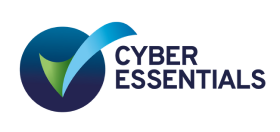API-driven flexibility
The fact that Kontent is API-driven the core of many of its benefits over traditional CMS. For one thing, the API structure ensures your content gets a consistent display across all channels. In other words, no matter how the user is accessing the content, they’re getting the same quality experience because the API pushes the same content onto any front end. The content doesn’t have to be remade and configured again and again to fit each channel, whether it’s a mobile phone, an Apple watch or a desktop computer. That true omni-channel delivery is really the heart and soul of what Kontent is about. This API structure also is technology-agnostic. That means that your content can be delivered in any framework, not just .NET, which is what Kentico EMS and many other CMS platforms require. So if, for instance, your site’s frontend has already been developed in another framework, it can still be used together with Kontent. It also removes barriers to integrations and opens up the possibility of using a digital team that specialises in a different technology, depending on your needs. With enterprise CMS packages, everything comes already integrated, which is great for organisations that need a one-stop shop. But because of Kontent’s expansive, tech-neutral nature, you have much more freedom to pick and choose the best third-party tools for your business and put them into play with your content. These types of integrations are easy.
Adaptability to your needs
Flexibility comes in other areas, too. Kontent, like other CaaS, lacks the big upfront licensing costs of traditional CMS. Instead Kontent has a tiered pricing model. It’s still contracted, but it’s based on changeable usage needs from month to month. This allows for rapid upscaling when activity calls for it. Rather crucially, it also allows for scaling back, at the end of a campaign or big event, such as a festival. It’s also inherently collaborative in its content productivity. Kontent allows for users to be assigned as producers, administrators, and other roles within the departmental structure. This keeps the decision-making matrix intact whilst pushing projects through the workflow and fosters efficient processes. There are also commenting and discussion functions that allows users to talk through content creation directly on the platform, saving time and meetings.
New horizons
Finally, Kontent is a peek into the future. Traditional CMS is definitely here for the long haul, and it has a role to play for lots of businesses well into the foreseeable. But for many companies, especially those with fluctuating needs, CaaS generally, and Kentico Kontent in particular, is going to prove to be the best solution in the next few years. Wondering if Kentico Kontent is right for you? Contact our Marketing Strategist Matt Jones.
Get more of this by subscribing to our regular newsletter





